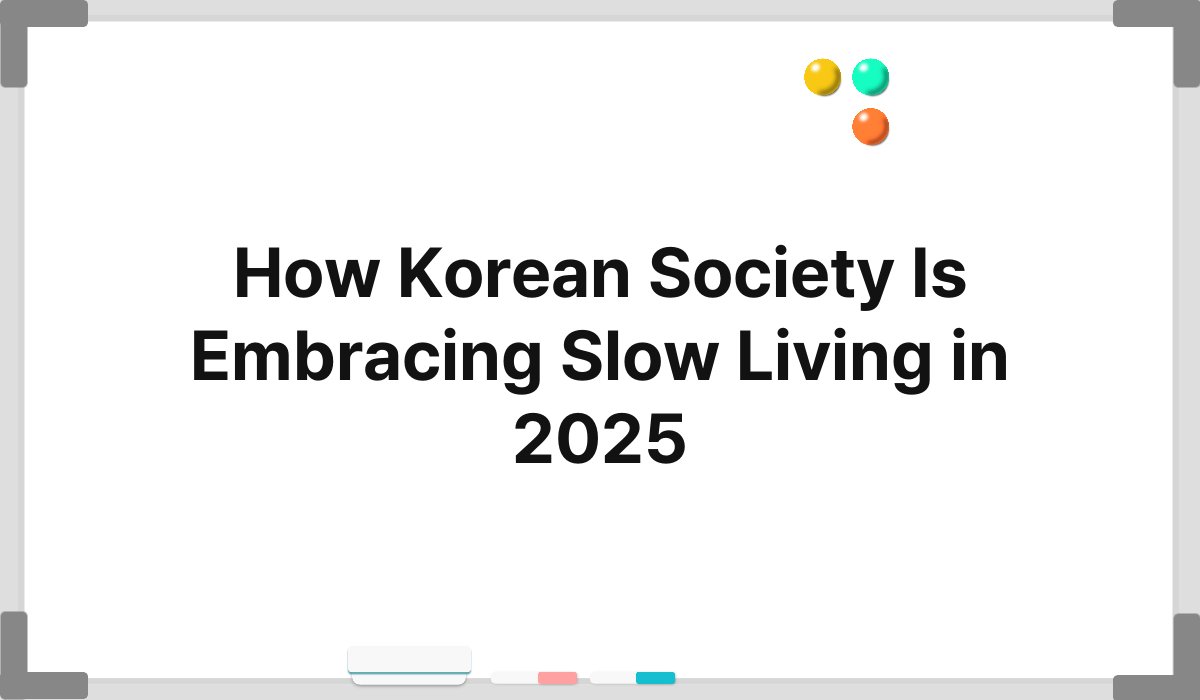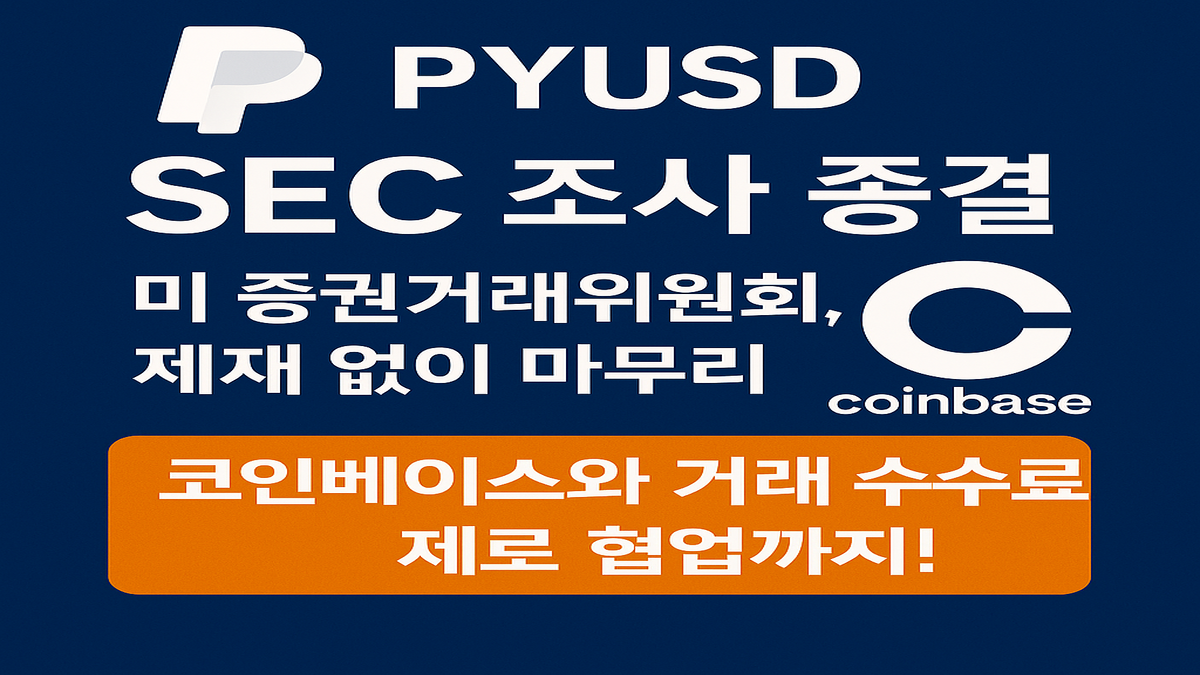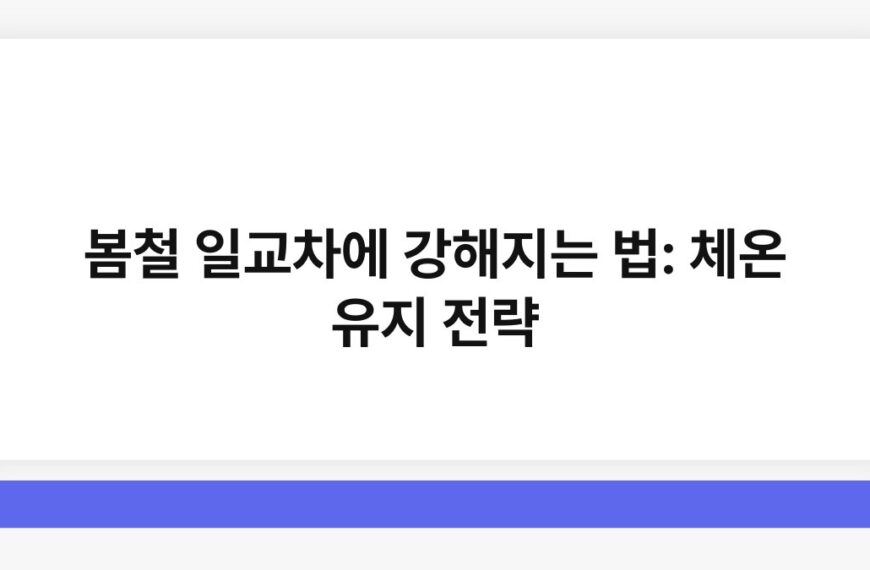[K-Bridge/Samuel] In 2025, Korean society is increasingly embracing the concept of slow living, a lifestyle that prioritizes mindfulness, simplicity, and a deeper connection to one’s surroundings.
This movement reflects a growing recognition of the mental and physical toll that fast-paced living can take.
As urbanization and technological advancements continue to accelerate, many individuals are seeking solace in a more deliberate and thoughtful way of life.
Slow living encourages people to slow down, appreciate the present moment, and cultivate a sense of well-being through meaningful experiences rather than material possessions.
By exploring this topic, readers will gain insights into the principles of slow living, its impact on various aspects of life in Korea, and practical ways to incorporate this philosophy into their daily routines.
The Origins of Slow Living in Korea
Historical Context of Slow Living
The roots of slow living in Korea can be traced back to traditional values that emphasize harmony with nature and community.
In the past, agricultural practices dictated a slower pace of life, where people engaged with their environment and each other.
This connection fostered a sense of belonging and purpose.
As modernization took hold, these values were overshadowed by rapid industrialization and urbanization.
However, in recent years, there has been a resurgence of interest in these traditional practices, as people seek to reclaim the balance that was lost.
The Influence of Global Trends
The global slow living movement has significantly influenced Korean society.
As individuals around the world began to advocate for a more sustainable and mindful way of living, Korea has embraced these ideas, adapting them to its unique cultural context.
This shift is evident in various aspects of life, from food and fashion to work and leisure.
The rise of social media has also played a role, as influencers and advocates share their experiences and promote the benefits of slowing down.
Cultural Reflections in Art and Literature
Korean art and literature have also begun to reflect the principles of slow living.
Many contemporary artists and writers explore themes of mindfulness, simplicity, and the beauty of everyday life.
This cultural shift encourages individuals to appreciate the small moments that often go unnoticed in a fast-paced world.
By engaging with these artistic expressions, people are reminded of the importance of slowing down and finding joy in the present.
The Role of Mindfulness in Slow Living
Understanding Mindfulness
Mindfulness is a core component of slow living, emphasizing the importance of being present in the moment.
In a society that often prioritizes productivity over well-being, practicing mindfulness can help individuals reconnect with themselves and their surroundings.
This practice encourages people to observe their thoughts and feelings without judgment, fostering a greater sense of self-awareness and emotional regulation.
Mindfulness Practices in Daily Life
Incorporating mindfulness into daily routines can be simple yet transformative.
Activities such as meditation, deep breathing exercises, and mindful eating allow individuals to cultivate a deeper appreciation for their experiences.
For instance, taking the time to savor a meal rather than rushing through it can enhance the enjoyment of food and promote healthier eating habits.
By integrating mindfulness into everyday life, individuals can reduce stress and find greater fulfillment.
The Impact of Mindfulness on Mental Health
Research has shown that mindfulness practices can significantly improve mental health outcomes.
In Korea, where mental health issues are often stigmatized, embracing mindfulness can provide individuals with tools to cope with anxiety and depression.
By fostering a culture of openness and acceptance around mental health, slow living can contribute to a more supportive and compassionate society.
Sustainable Living and Environmental Consciousness
The Connection Between Slow Living and Sustainability
Slow living inherently promotes sustainability, as it encourages individuals to make more conscious choices about their consumption habits.
In a world where fast fashion and disposable products dominate, adopting a slower lifestyle can lead to more sustainable practices.
This shift not only benefits the environment but also fosters a greater appreciation for quality over quantity.
Local and Organic Consumption
In 2025, many Koreans are turning to local and organic food sources as part of their commitment to sustainable living.
Farmers’ markets and community-supported agriculture initiatives have gained popularity, allowing individuals to connect with local producers and support sustainable farming practices.
This trend not only benefits the environment but also enhances the quality and freshness of the food consumed.
Reducing Waste and Minimalism
The principles of slow living encourage individuals to reduce waste and embrace minimalism.
By decluttering their lives and focusing on what truly matters, people can create a more harmonious living environment.
This approach not only simplifies daily routines but also contributes to a more sustainable lifestyle by minimizing the demand for unnecessary products.
The Impact of Slow Living on Work-Life Balance
Redefining Success
In a culture that often equates success with long hours and constant productivity, slow living challenges these notions.
Many individuals are beginning to redefine what success means to them, prioritizing work-life balance over traditional markers of achievement.
This shift allows for a more holistic approach to life, where personal fulfillment takes precedence over external validation.
Flexible Work Arrangements
The rise of remote work and flexible schedules has made it easier for individuals to adopt a slower pace of life.
In 2025, many companies are recognizing the importance of employee well-being and are implementing policies that promote work-life balance.
This change allows individuals to allocate time for self-care, family, and personal pursuits, ultimately leading to greater job satisfaction and productivity.
The Importance of Downtime
Embracing slow living also emphasizes the importance of downtime.
In a society that often glorifies busyness, taking time to rest and recharge is crucial for maintaining overall well-being.
Individuals are encouraged to schedule regular breaks, engage in leisure activities, and prioritize self-care.
By recognizing the value of downtime, people can enhance their creativity and resilience.
The Emergence of Slow Travel in Korea
Redefining Travel Experiences
Slow travel is gaining momentum in Korea as individuals seek more meaningful experiences rather than rushing through tourist attractions.
This approach encourages travelers to immerse themselves in local cultures, traditions, and environments.
By taking the time to explore a destination at a leisurely pace, individuals can foster deeper connections and create lasting memories.
Sustainable Tourism Practices
The slow travel movement aligns with the growing emphasis on sustainable tourism in Korea.
Travelers are increasingly seeking eco-friendly accommodations, supporting local businesses, and participating in community-based tourism initiatives.
This shift not only benefits the environment but also contributes to the economic sustainability of local communities.
The Role of Nature in Slow Travel
Nature plays a significant role in the slow travel movement, as many individuals are drawn to outdoor experiences that promote relaxation and mindfulness.
Hiking, camping, and exploring natural landscapes allow travelers to disconnect from the fast-paced world and reconnect with themselves.
In 2025, many Koreans are prioritizing nature-based travel experiences that foster a sense of peace and well-being.
Community Building and Social Connections
The Importance of Community in Slow Living
Slow living emphasizes the significance of community and social connections.
In a fast-paced society, individuals often feel isolated and disconnected.
By fostering a sense of belonging and actively participating in local communities, people can cultivate meaningful relationships and support networks.
Community Initiatives and Events
In Korea, various community initiatives and events are emerging to promote slow living.
Workshops, farmers’ markets, and cultural festivals encourage individuals to come together, share experiences, and learn from one another.
These gatherings not only strengthen community bonds but also provide opportunities for personal growth and development.
The Role of Technology in Community Building
While technology can contribute to feelings of isolation, it can also facilitate community building.
Social media platforms and online forums allow individuals to connect with like-minded people who share their values and interests.
In 2025, many Koreans are using technology to foster connections and engage in discussions about slow living and sustainability.
Education and Awareness of Slow Living
Integrating Slow Living into Education
Educational institutions in Korea are beginning to recognize the importance of slow living principles.
By incorporating mindfulness, sustainability, and community engagement into curricula, schools can equip students with the tools to lead balanced and fulfilling lives.
This shift in education promotes a holistic approach to learning that values personal growth alongside academic achievement.
Raising Awareness Through Media
Media plays a crucial role in raising awareness about slow living.
Documentaries, articles, and social media campaigns are highlighting the benefits of a slower lifestyle and inspiring individuals to make positive changes.
By sharing stories of those who have embraced slow living, media can motivate others to explore this philosophy.
Workshops and Community Programs
Various workshops and community programs are emerging to educate individuals about the principles of slow living.
These initiatives provide practical tools and resources for incorporating mindfulness, sustainability, and community engagement into daily life.
By participating in these programs, individuals can gain valuable insights and support on their journey toward a slower lifestyle.
Practical Tips for Embracing Slow Living
Mindful Morning Routines
Creating a mindful morning routine can set the tone for a slower pace throughout the day.
Taking time to engage in activities such as meditation, journaling, or enjoying a leisurely breakfast can help individuals start their day with intention and clarity.
This practice encourages a more thoughtful approach to daily tasks and responsibilities.
Embracing Nature
Spending time in nature is a fundamental aspect of slow living.
Whether through hiking, gardening, or simply taking a walk in a local park, connecting with the natural world can provide a sense of peace and grounding.
In 2025, many Koreans are prioritizing outdoor activities that promote relaxation and mindfulness.
Cultivating Gratitude
Practicing gratitude is an essential component of slow living.
By taking time to reflect on the positive aspects of life, individuals can foster a greater appreciation for their experiences.
Keeping a gratitude journal or sharing moments of gratitude with loved ones can enhance overall well-being and promote a more positive outlook on life.
In conclusion, the embrace of slow living in Korean society in 2025 reflects a profound shift toward mindfulness, sustainability, and community engagement.
As individuals navigate the complexities of modern life, the principles of slow living offer a pathway to greater fulfillment and well-being.
By prioritizing meaningful experiences over material possessions, Koreans are redefining success and fostering a deeper connection to themselves and their communities.
This movement not only benefits individuals but also contributes to a more sustainable and compassionate society.
Embracing slow living is not merely a trend; it is a transformative approach to life that encourages us all to slow down, appreciate the present, and cultivate a sense of purpose and belonging.








